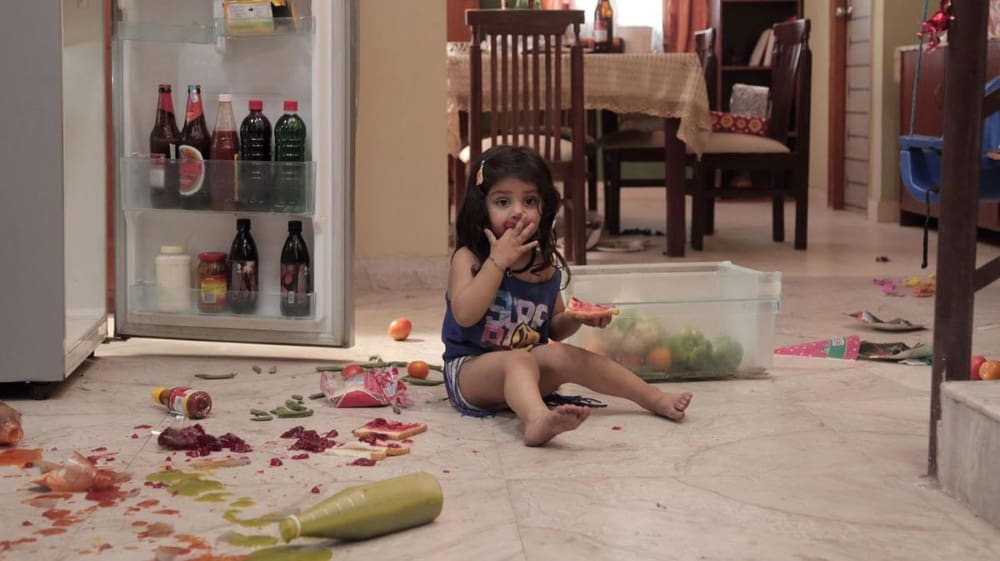The film “Pihu” has captivated audiences with its gripping narrative and heart-wrenching scenes, leaving many to wonder about the story’s origins. Is this intense tale based on real events or purely a work of fiction? As viewers delve into the movie’s plot, questions about its authenticity and the implications of its ending arise.
Exploring whether “Pihu” is rooted in reality can shed light on the filmmakers’ intentions and enhance our understanding of the narrative. This article will dissect the film’s ending, unraveling its complexities while providing insights into any real-life inspirations behind this harrowing story.
Overview of the Film “Pihu”
“Pihu,” directed by Vinod Kapri, is a gripping drama that centers on a two-year-old girl left alone in her apartment. The film’s intense narrative and emotional depth have captivated audiences worldwide.
Exploring the Plot and Central Theme
The plot follows Pihu, a toddler who wakes up to find herself alone at home with her unconscious mother. As she navigates through the day, unaware of the dangers around her, viewers experience heightened tension and anxiety. The central theme revolves around neglect and its dire consequences, highlighting how vulnerable children can be in such situations.
Critical Reception and Public Reaction
Critics praised “Pihu” for its unique storytelling approach and powerful performances. The film received accolades for its realistic portrayal of a child’s perspective in an alarming scenario. However, some critics found the movie’s intensity overwhelming. Public reaction mirrored this sentiment; while many lauded it as a must-watch thriller, others felt disturbed by its harrowing content.
Is “Pihu” Based on a Real Story?
“Pihu,” directed by Vinod Kapri, draws inspiration from real-life events. While the film’s narrative is fictional, it reflects genuine incidents of child neglect and isolation.
The Inspiration Behind the Movie
Vinod Kapri based “Pihu” on an actual incident reported in 2014. A two-year-old girl was left alone in her apartment with her deceased mother for several days. This tragic event highlighted severe issues related to child safety and parental responsibility. Kapri aimed to bring attention to these critical concerns through his storytelling.
Differences Between the Film and Real Events
While “Pihu” mirrors real-life incidents, several differences exist between the movie and actual events:
- Duration: In reality, the child spent multiple days alone; in the film, Pihu’s ordeal spans one day.
- Setting: The movie takes place entirely within a high-rise apartment; real events occurred in different living conditions.
- Outcome: The film provides a dramatic resolution for cinematic effect; actual outcomes varied depending on specific circumstances.
These distinctions were made to enhance narrative tension while maintaining authenticity regarding core themes of neglect and vulnerability.
Analysis of “Pihu’s” Climactic Ending
The climactic ending of “Pihu” leaves a lasting impression on viewers, combining shock and emotional depth. The film’s conclusion underscores the central themes while evoking strong reactions.
Interpretations and Themes
“Pihu’s” ending highlights the themes of neglect and vulnerability. The final scenes show Pihu in increasingly dangerous situations, emphasizing how quickly a child’s environment can become perilous without adult supervision. This portrayal serves as a stark reminder of parental responsibility.
The film also explores isolation. Pihu’s loneliness is palpable, with her attempts to interact with her unresponsive mother adding layers to the narrative. This element underscores the psychological impact on children left alone for extended periods.
Impact on Viewers
Viewers experience a range of emotions during “Pihu’s” climax, from anxiety to profound sadness. The realistic depiction of danger keeps audiences on edge, making them reflect on real-life implications.
Critics note that the ending forces viewers to confront uncomfortable truths about child safety and parental neglect. It sparks conversations about societal responsibilities toward children’s welfare and preventive measures against such incidents.
Overall, “Pihu’s” climactic ending effectively combines storytelling with social commentary, leaving an indelible mark on its audience.
Broader Implications of the Film
“Pihu” extends beyond its narrative, addressing significant societal issues.
Discussing Child Safety and Parental Negligence
The film highlights critical child safety concerns. It underscores the importance of constant supervision for young children, emphasizing that even brief lapses can lead to dire consequences. The story draws attention to parental negligence, showcasing how neglect impacts a child’s physical and emotional well-being. By portraying a vulnerable child in distressing situations, “Pihu” prompts viewers to reflect on their responsibilities towards children’s safety and welfare.
Cinema as a Tool for Social Awareness
“Pihu” exemplifies cinema’s power to raise social awareness. Through its intense storytelling, it brings pressing issues like child neglect into public discourse. Films like “Pihu” serve as catalysts for change by engaging audiences emotionally and intellectually. They encourage discussions on improving child protection laws and support systems. By blending entertainment with social commentary, such films contribute significantly to societal progress.
Conclusion
“Pihu” stands as a poignant reminder of the fragility and vulnerability of children when left unattended. Its gripping narrative and emotional depth not only captivate audiences but also spark important conversations about child safety and parental responsibility. By drawing from real-life events, the film underscores the urgent need for societal awareness and stronger protective measures for children. Through its intense portrayal of neglect, “Pihu” serves as both a compelling thriller and a powerful call to action, urging viewers to reflect on the critical importance of safeguarding our youngest members of society.

